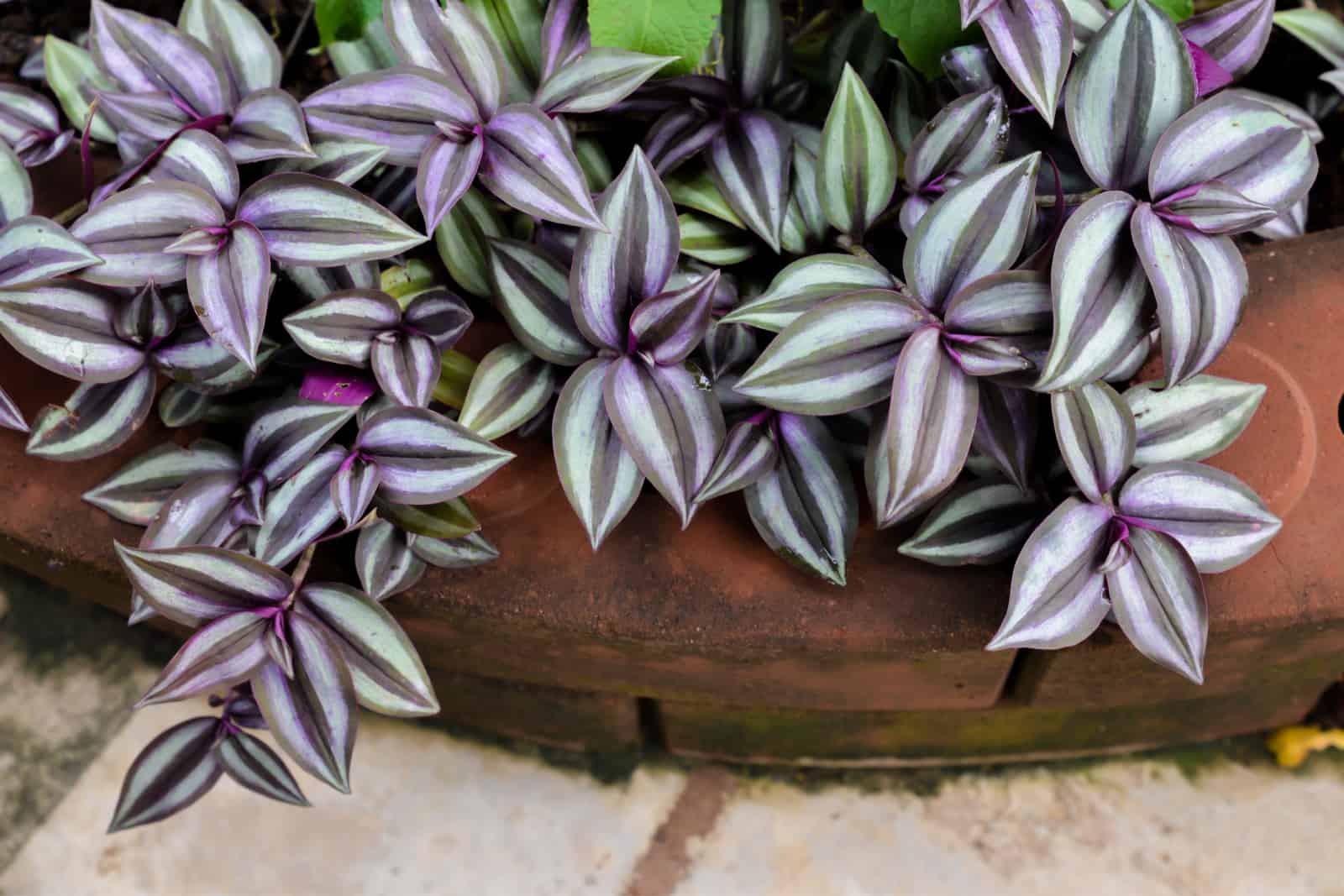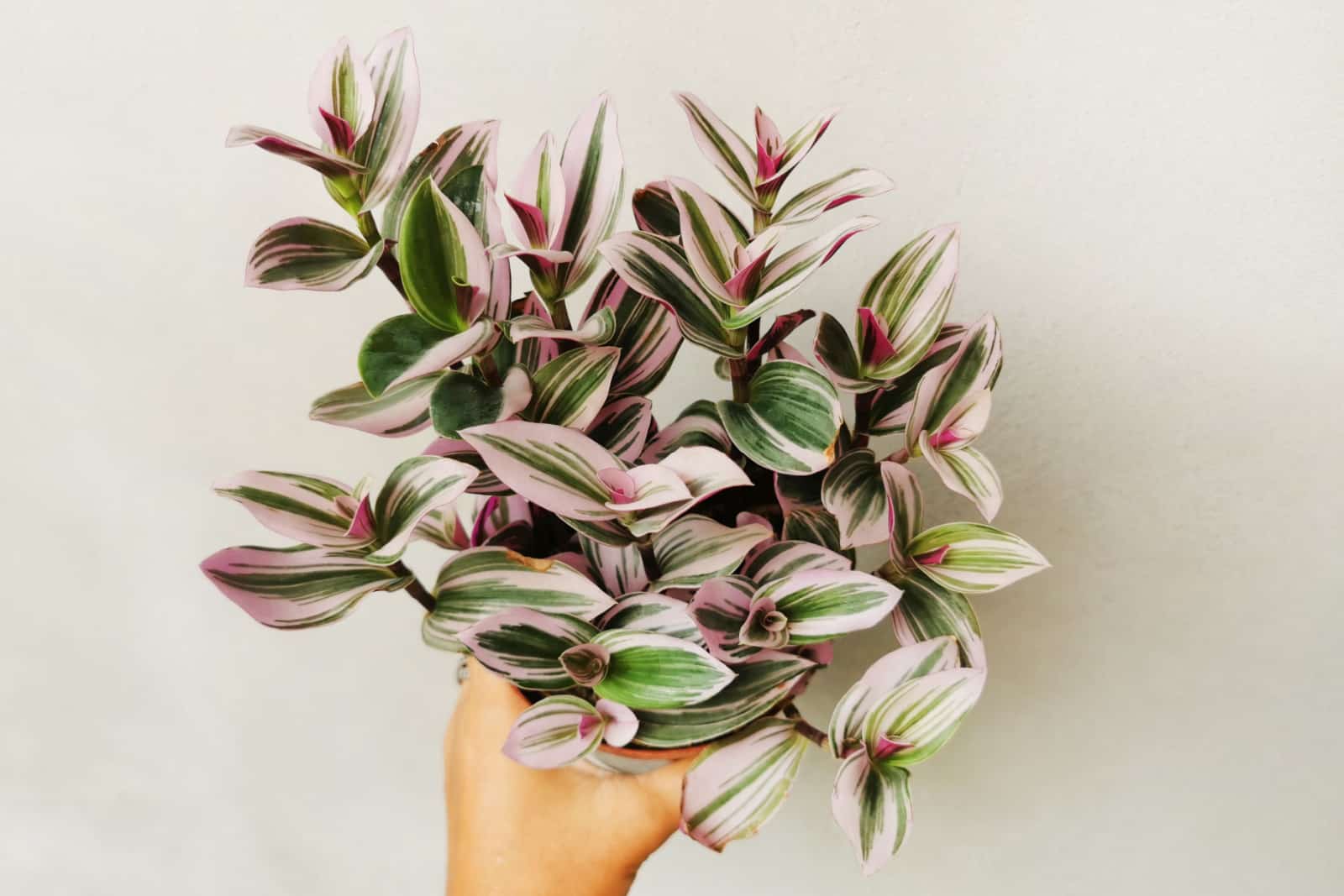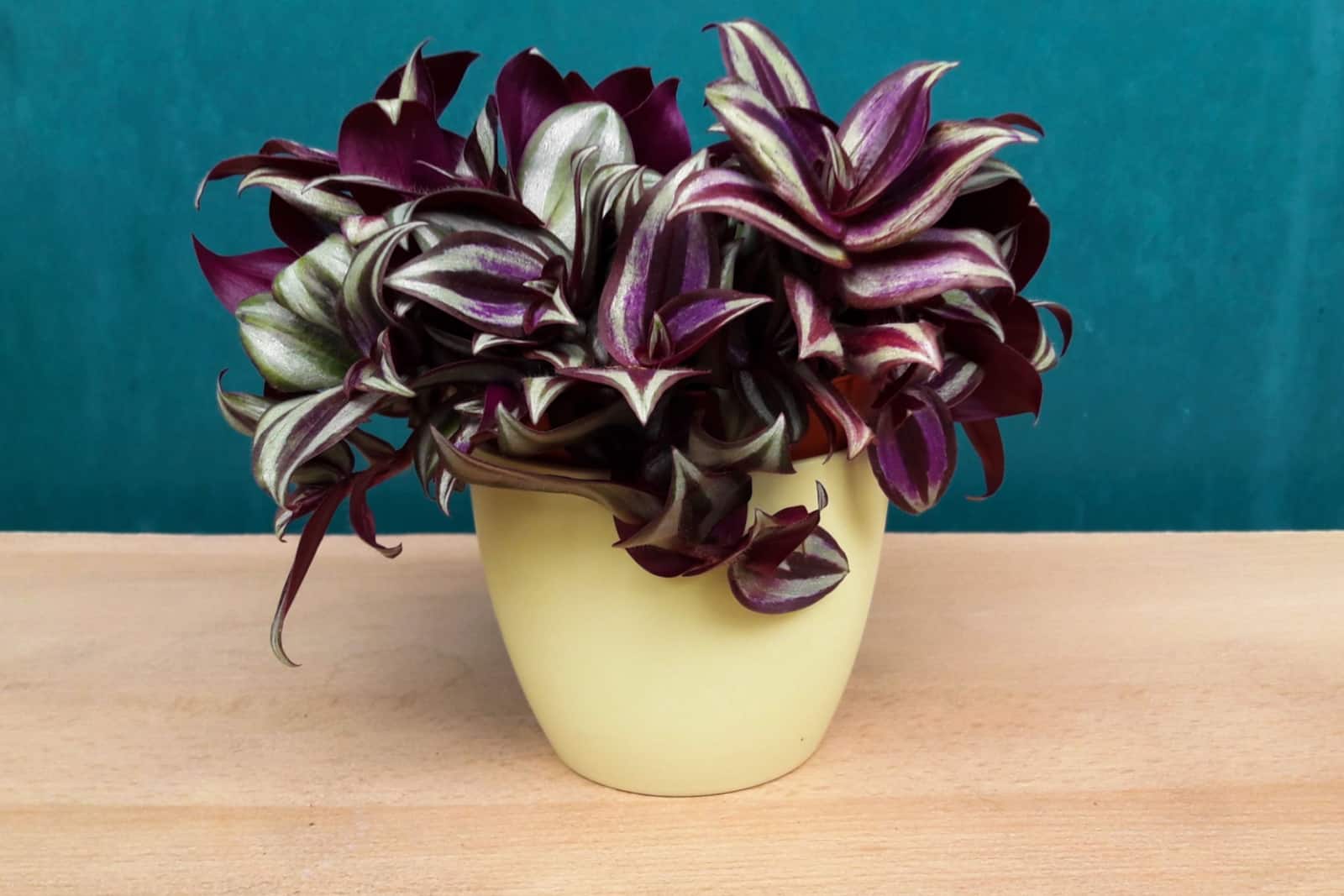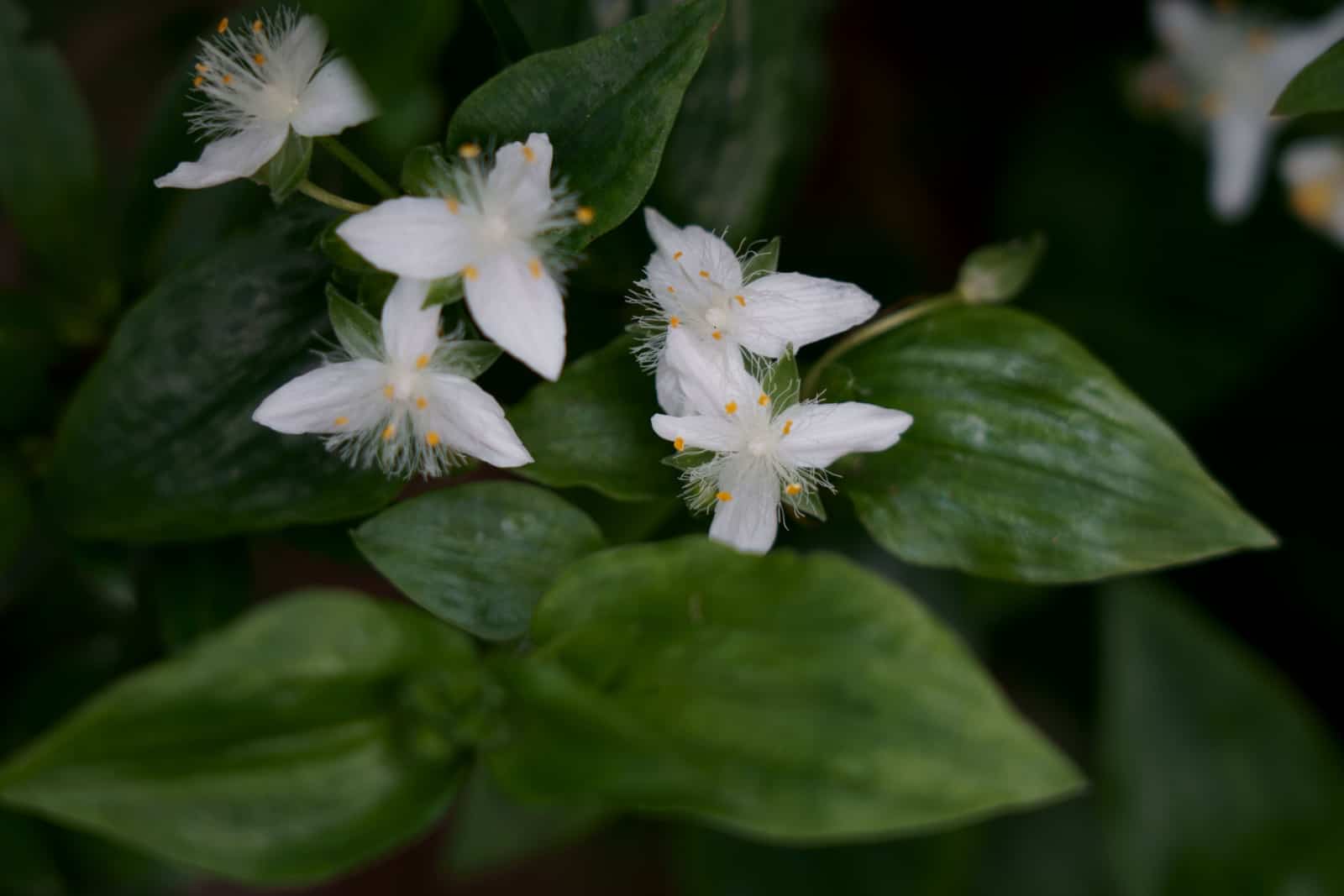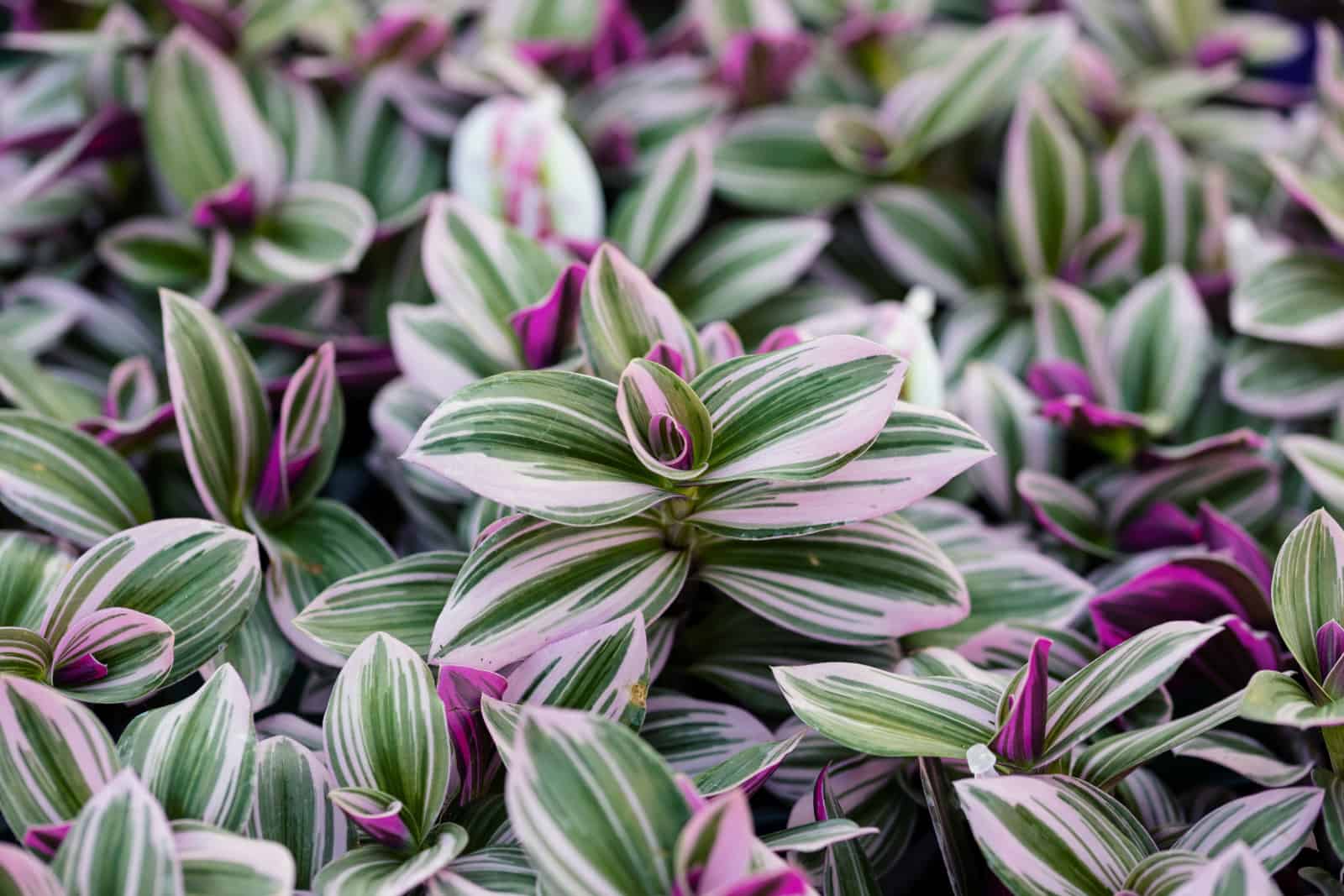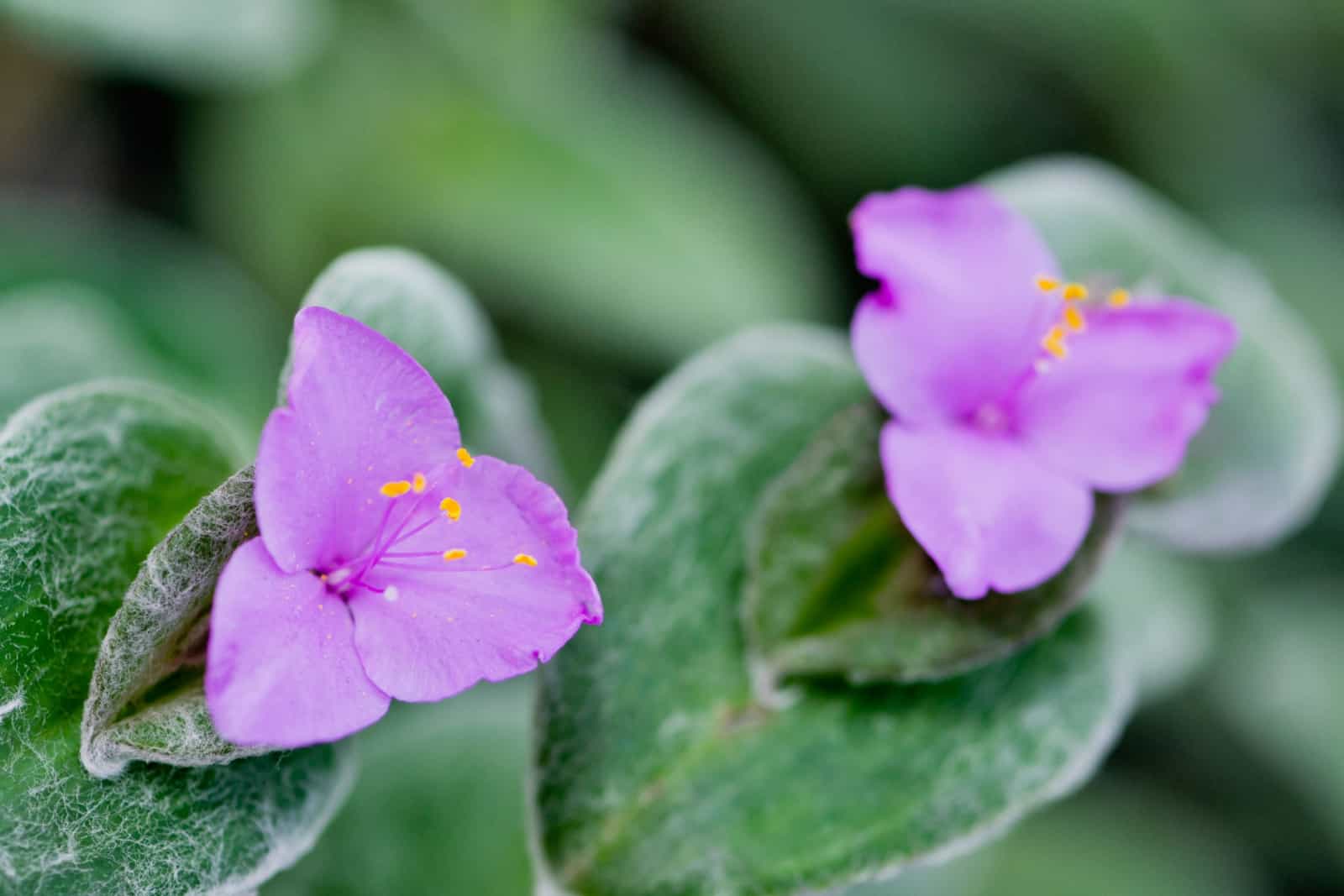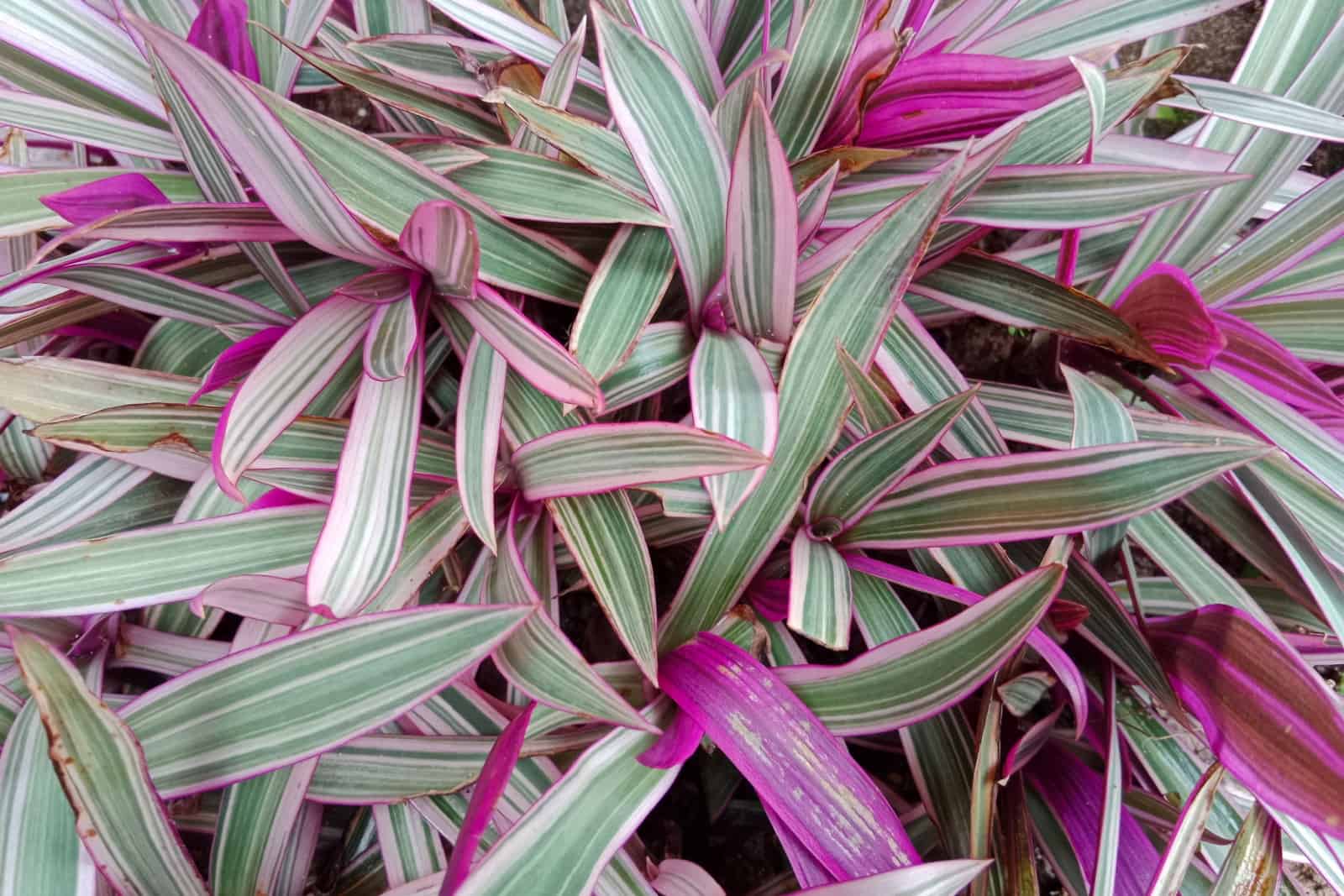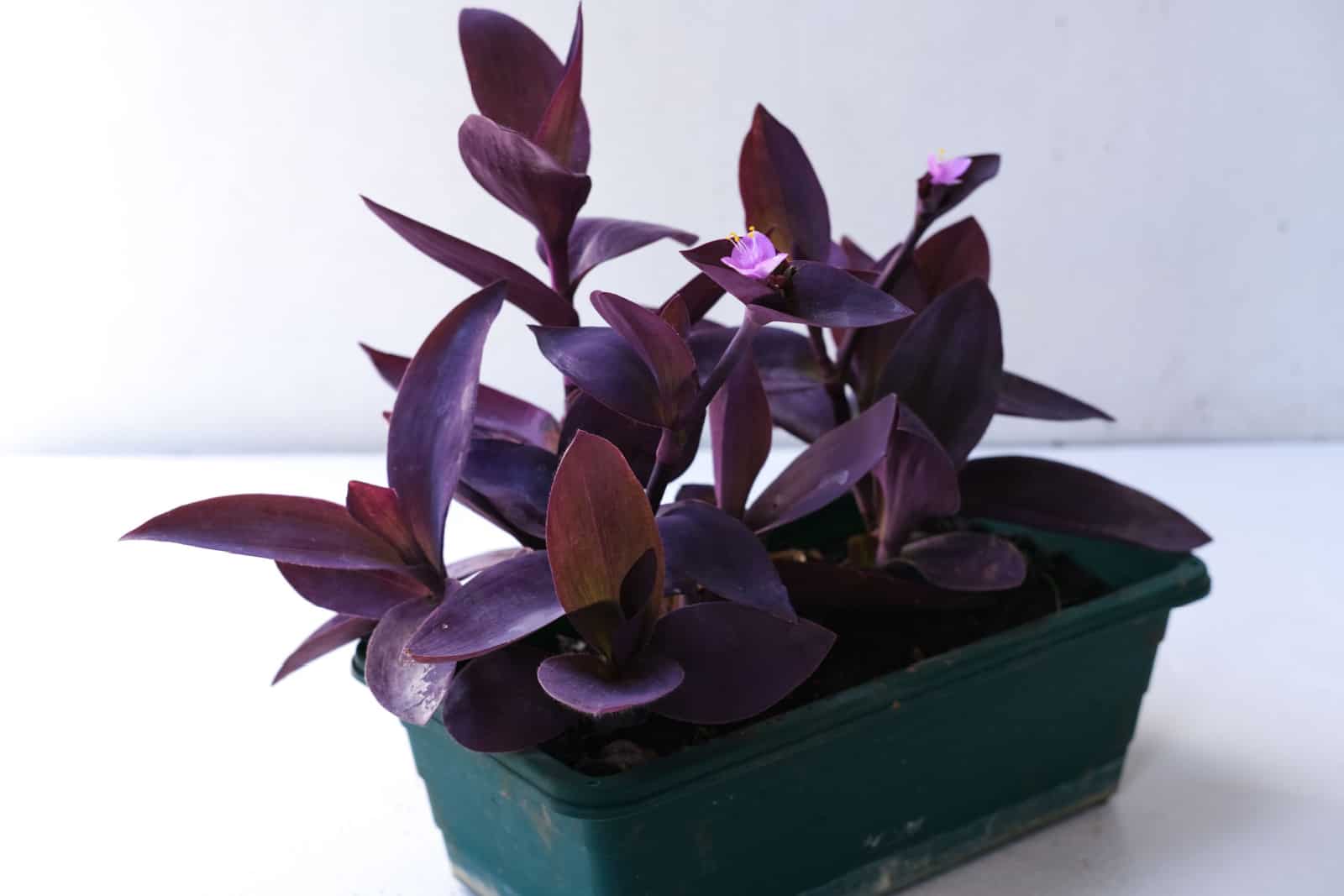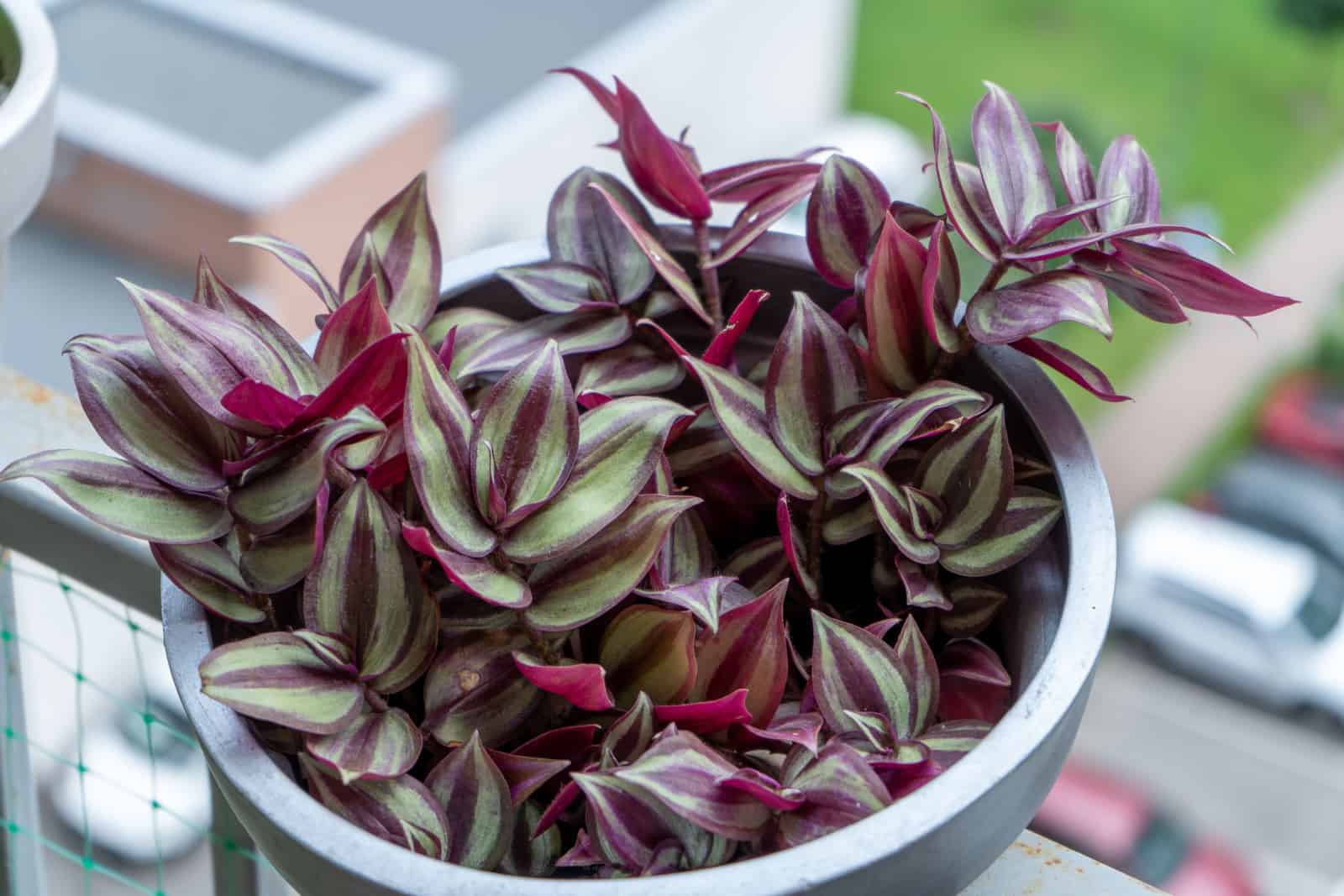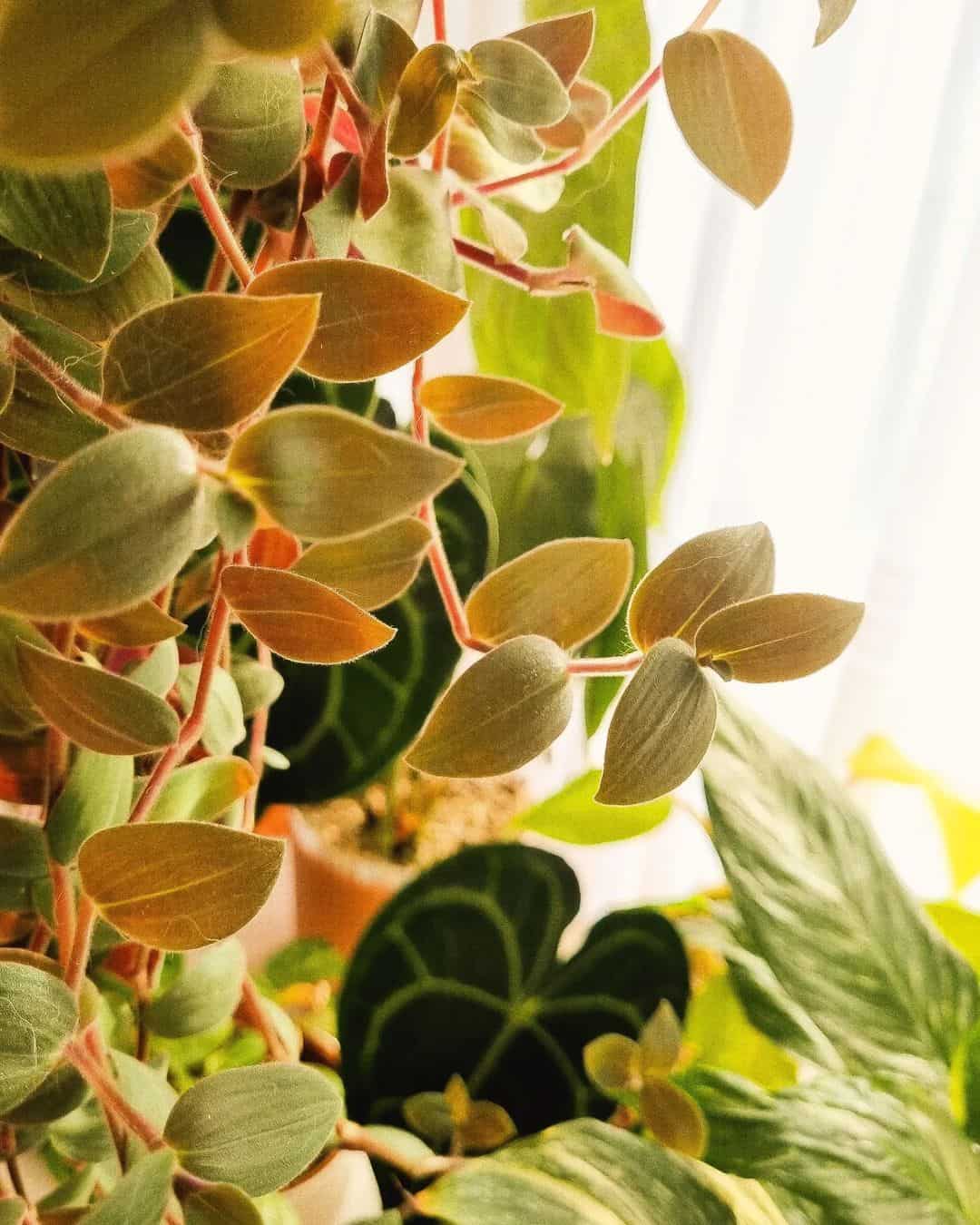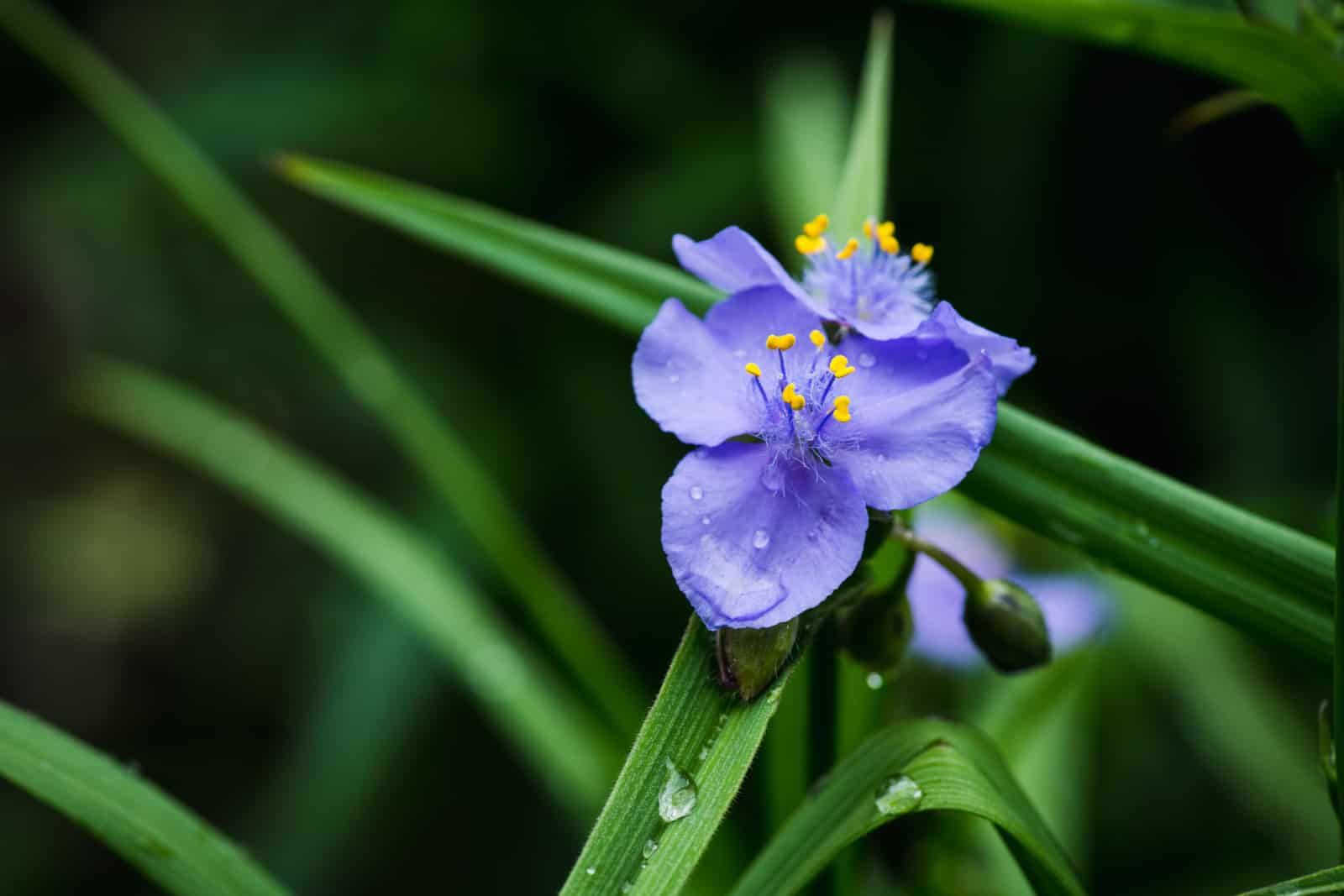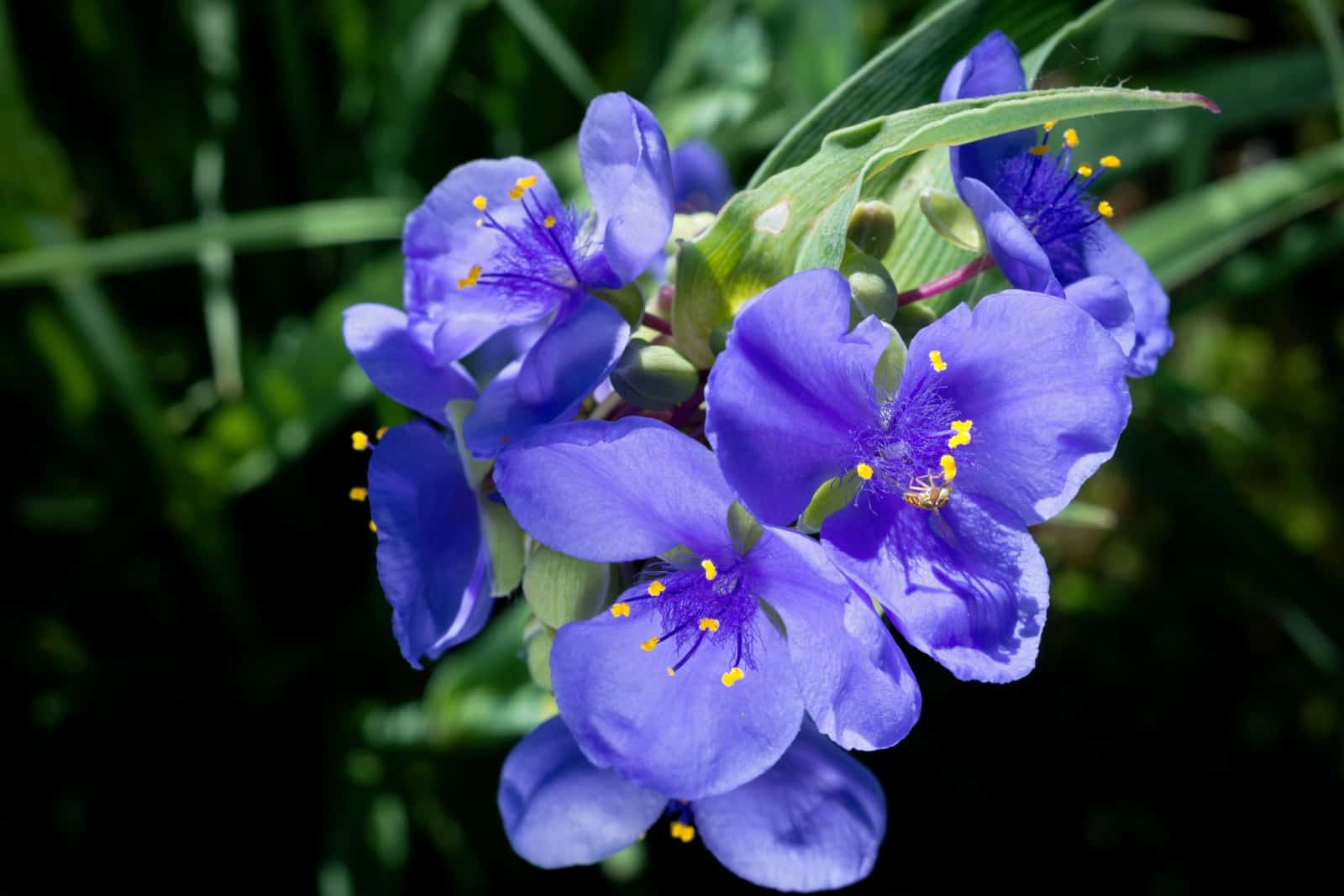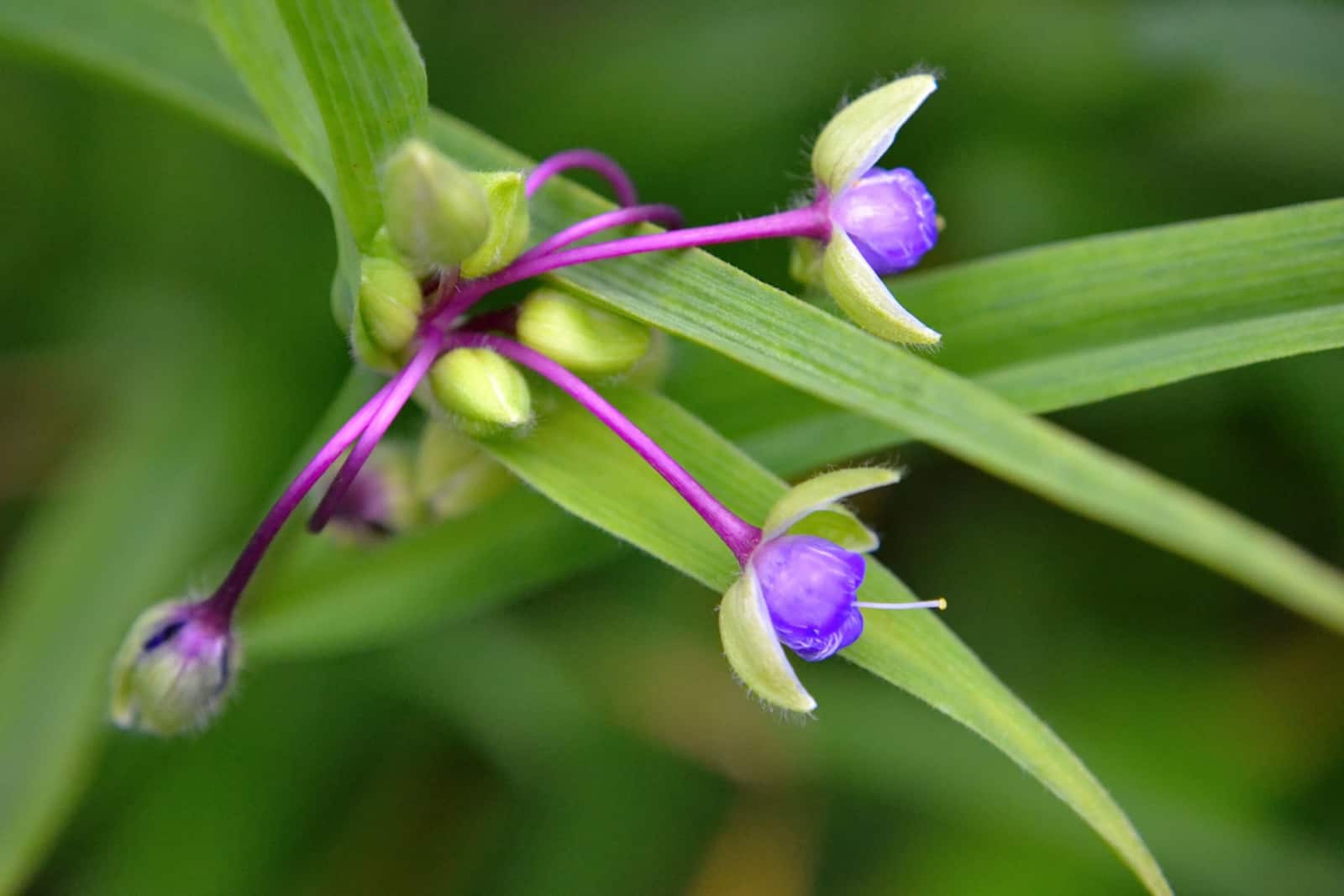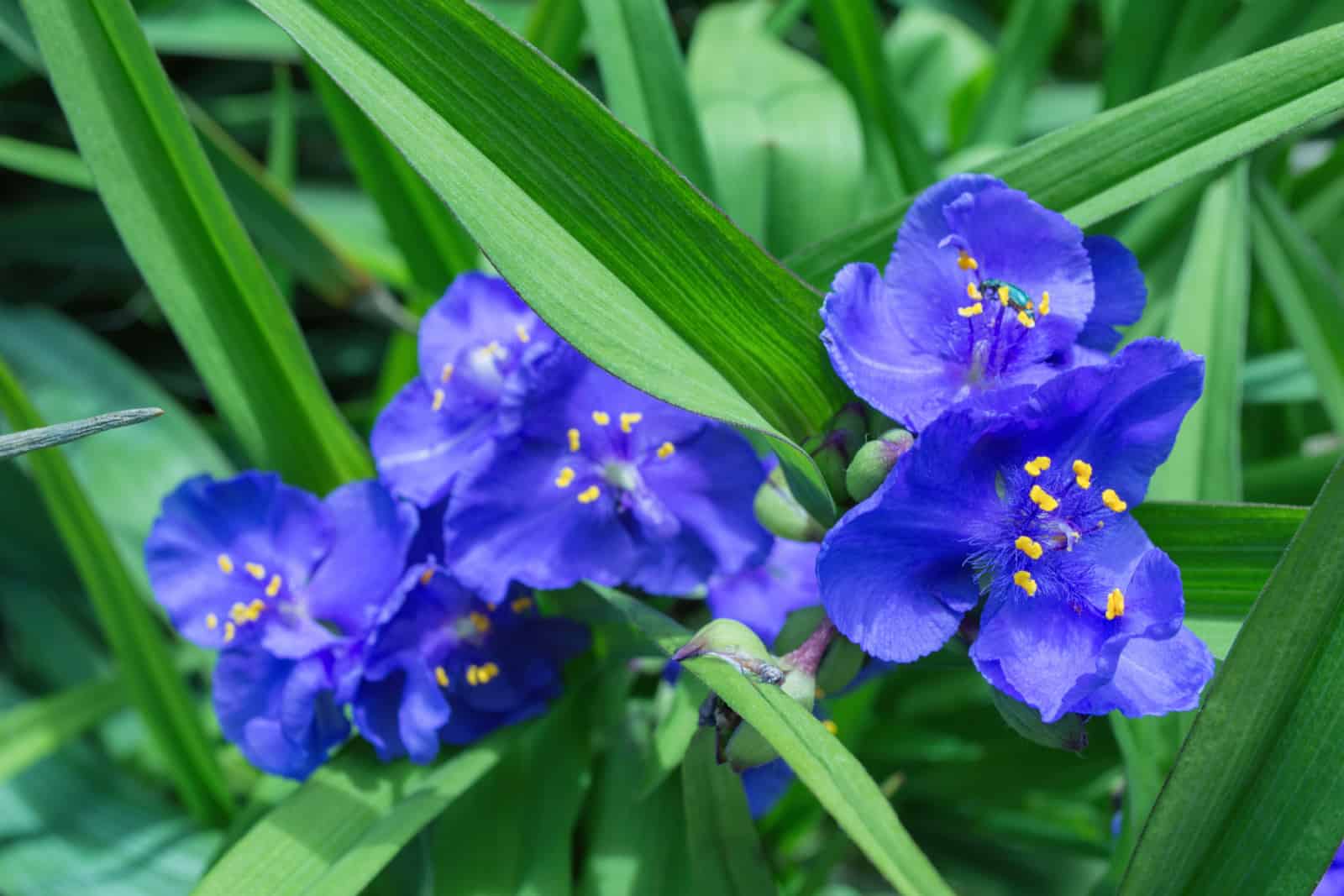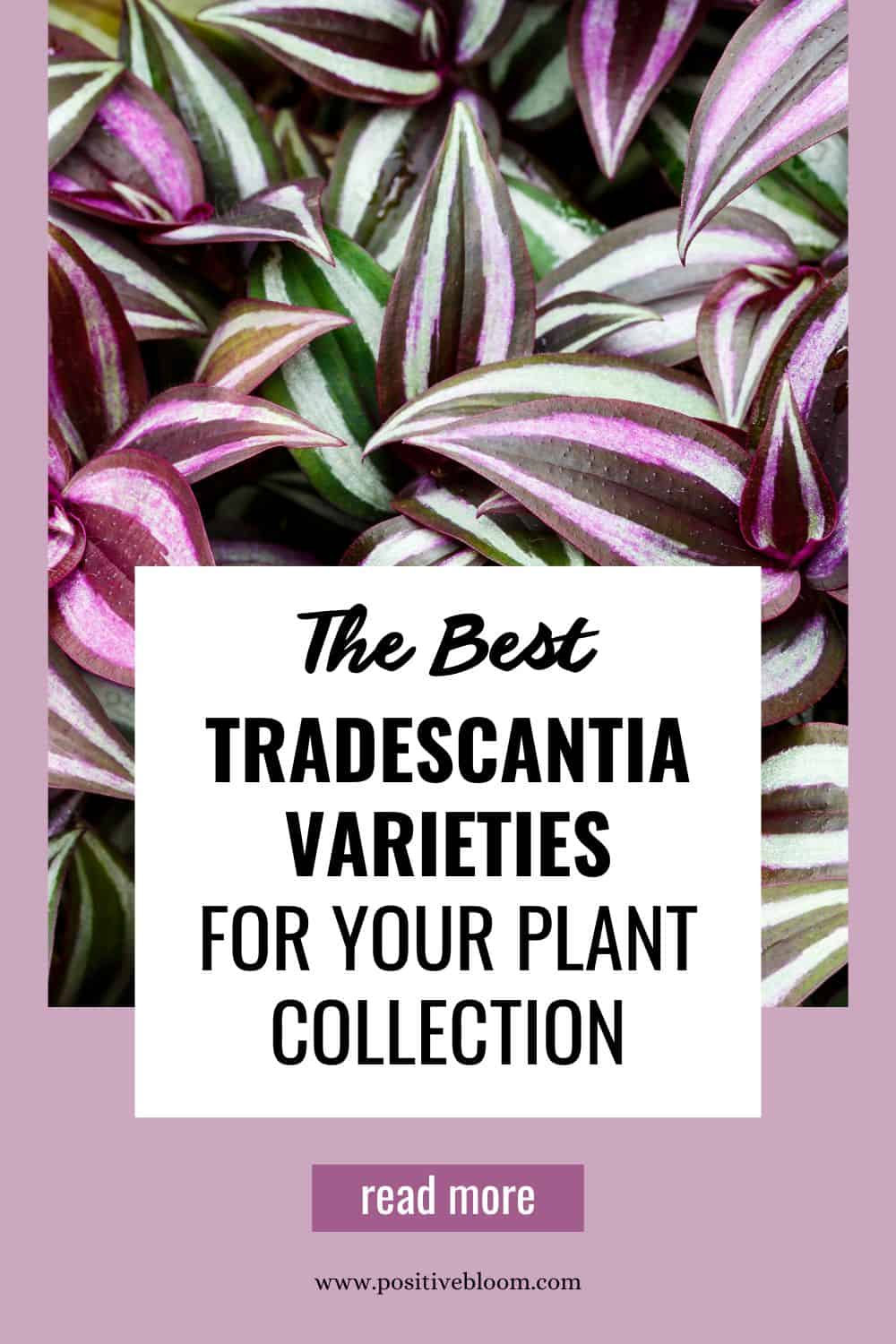The Tradescantia plant is a common sight in hanging baskets in households around the world. These plants look fascinating due to their charming foliage that comes in many colors.
Tradescantia plants are easy to maintain, so if you are a beginner grower you should definitely add one to your plant collection.
Another great thing is that there are many Tradescantia varieties to choose from. I couldn’t possibly cover them all due to the sheer number of species and all their cultivars.
However, I prepared a collection of the most beautiful Tradescantia varieties along with their features.
Let’s start with some basic info about the Tradescantia:
[table id=534 /]
Let’s get started!
Tradescantia Varieties
The term Tradescantia actually refers to the genus, which is a part of the Commelinaceae family.
So, the scientific names for the plants below will include the term Tradescantia because of the genus, and the second term will define the species. Additionally, I’ll mention the common names used for each species so you never make a mistake again.
I’ll also mention the most notable cultivars of each species.
The most common Tradescantia varieties include:
• Tradescantia zebrina aka inchplant
• Tradescantia fluminensis aka small-leaf spiderwort
• Tradescantia albiflora Nanouk
• Tradescantia sillamontana
• Tradescantia spathacea
• Tradescantia pallida aka purple heart
• Tradescantia blossfeldiana
• Tradescantia chrysophylla
• Tradescantia virginiana
• Tradescantia ohiensis
• Tradescantia (Andersoniana group)
• Tradescantia occidentalis
Let’s get into detail!
Tradescantia Zebrina
I’ll start with the most popular spiderwort plant, the stunning Tradescantia zebrina. I’ve seen this Tradescantia variety in many houseplant collections, and it seems its popularity won’t be dropping any time soon.
It was commonly referred to as Zebrina pendula.
This Tradescantia features lance-shaped leaves that come in green and purple, depending on the cultivar.
The underside of the zebrina leaf comes in magenta, and that’s not all! The term zebrina describes the plant perfectly; this species’ trademark are the silverish stripes that resemble zebra stripes, which add a unique touch to the overall appearance.
The zebrina plant typically reaches 9 inches in height, and the vines can take over your room unless pruned.
The plant is native to Mexico, which means it enjoys warmer temperatures between 60 to 80 degrees Fahrenheit.
Here are the most notable cultivars of the Tradescantia zebrina plant.
Tradescantia zebrina‘ Burgundy‘
The Zebrina burgundy features purplish green leaves with burgundy undersides, hence the name. The leaves are decorated with silverish-white stripes.
Be careful with the light conditions you provide for your zebrina burgundy plant; it prefers indirect light, so if it’s exposed to direct sunlight the leaf color will significantly fade.
The lower stems of a zebrina burgundy will droop if there is too little light, and the leaves will lose most of their vibrant colors.
The Burgundy zebrina produces white to lavender flowers with yellow filaments, but rarely blooms indoors.
Tradescantia zebrina Silver plus
The Silver Plus zebrina plant has lovely pointed leaves that start off green and turn silver during the year, as well as noticeable dark purple streaks and hints of burgundy.
The Silver plus has a vining growth habit that makes it an excellent choice for hanging baskets. I also find them fascinating when grown as groundcovers.
Tradescantia zebrina Quadricolor
If I had to choose the cheeriest variety of Tradescantia zebrina, the quadricolor would be my choice. Well, as the name suggests, the plant features 4 colors.
The stripes on the leaves come in green, creamy, white, and pink.
The interesting feature of the quadricolor zebrina plant is that its variegations aren’t on the leaves, but rather on the stems.
Tradescantia zebrina Red gem
Another zebrina cultivar is the red gem plant. It may be pretty tricky to identify this Tradescantia because the light level determines the color.
If light conditions aren’t correct, the stripes of the red gem cultivar will fade and become more pinkish red. If given enough light, the plant will produce deep reddish-purple leaves.
Tradescantia Fluminensis
There’s an interesting story about fluminensis Tradescantia plants. It’s native to South America and commonly grown as a houseplant.
However, it was imported to New Zealand at the beginning of the 20th century to stabilize river banks. Now the fluminensis is a severe invader in that area. It does well in moist soils and is particularly shade resistant. It is exceedingly challenging to regulate once it has been developed.
You can grow it in hanging baskets as an indoor plant. If you live in growing zones 10 and 11, you can cultivate the plant outdoors as a groundcover, but you’ll need to pay attention to its growth.
I’ll list the four most common Tradescantia fluminensis cultivars below.
Tradescantia fluminensis Tricolor
The leaves of the Tradescantia fluminensis tricolor are decorated with green hues and pink striations that turn into deep purple as the plant matures.
The oval-shaped and pointy leaves of the tricolor Tradescantia may reach up to 2.5 inches in length. Tiny clusters of white flowers typically appear in summer if the plant is cultivated outdoors in warmer climates.
Tradescantia fluminensis Lavender
The lavender fluminensis perennial plant features variegated stems that can revert in low light. It often goes under the name lilac fluminensis, but the correct term is lavender.
The leaves come in pastel shades of white, silverish-green, lavender, and pink, making this tradescantia plant variety really stand out.
Tradescantia fluminensis Variegata
The Variegata fluminensis plant features lance-shaped leaves decorated with white and green stripes.
Unfortunately, if your fluminensis variegata has any entirely white leaves, they won’t last long due to the lack of chlorophyll.
Tradescantia fluminensis Aureovariegata
The common name for the aureovariegata fluminensis is yellow zebra. You can differentiate it from variegata fluminensis by the variegation color.
We’ve seen that the variegata has white variegations; in contrast, aureovariegata leaves have yellow variegations.
Tradescantia Albiflora
The Albiflora tradescantia is another trailing variety of Tradescantia plants. It’s known for its pale, creamy, and pink stripes.
The undersides of the leaves come in purple, which adds more beauty to the plant.
In its natural habitat, the Tradescantia albiflora produces tiny white flowers that, unfortunately, we can’t see indoors.
Tradescantia albiflora albovitatta
The most common albiflora species is the amazing Tradescantia albiflora albovitatta. It features bright green leaves that have amazing white stripes.
It’s worth mentioning that the albovitatta looks better as a creeper than as a trailing plant. This Tradenscantia is relatively drought-tolerant, which makes it perfect for novice gardeners.
However, the albovitatta thrives best when its soil is kept moist. Additionally, ensure bright indirect sunlight for best results.
Tradescantia nanouk
If you spend time on social media, I’m sure you’ve noticed the Tradescantia nanouk plant. It has become very popular due to its stunning appearance.
The fuzzy-looking foliage grows on thick stems and comes in pink, purple, and light green.
It differs from other Tradescantia varieties because two carefully chosen seedlings of Tradescantia albiflora were cross-pollinated to create a brand-new variety in 2012.
Therefore, the nanouk plant is native to the Netherlands, unlike other species that are native to North, Central, and South America.
This Tradescantia is pretty hardy and easy to maintain, making it a fantastic option for novices!
Tradescantia Sillamontana
The Tradescantia sillamontana is one of the most interesting species in the Tradescantia genus. It goes by the nicknames white velvet and cobweb spiderwort.
The leaves of the sillamontana plant are olive to grayish-green, but what makes them special are actually the silvery-white hairs that densely cover the entire leaf surface.
The white velvet plant produces pink flowers at the peak of its growing season. The blooms typically last for about a month, but just like all other Tradenscantia plants, sillamontana rarely blooms indoors.
Sillamontana plants are widely grown as groundcovers in warmer climates. As for colder growing zones, the white velvet plant grows best in pots. You can keep it outdoors during warmer temperatures, but move your white velvet indoors to overwinter when fall approaches.
If given the right conditions, the sillamontana Tradescantia can reach up to 12 inches in height and spread up to 20 inches.
Ensure well-draining soil and a lot of bright light (indirect) to maintain compact growth and the unique silverish color.
Tradescantia Spathacea
The tradescantia spathacea was formerly known as the Rhoeo spathacea. The common names for this plant are oyster plant, boat lily, Moses-in-the-cradle, and Moses in a basket.
The spathacea plant differs from other Tradescantia species because it grows upwards. For this reason, a spathacea isn’t a good choice for hanging baskets.
The oyster plant is prized for its distinctive flowers and alluring leaves.
The spathacea plant produces pink or white flowers, but since it rarely flowers indoors, the focus is on its foliage.
The leaves of the Moses-in-the-cradle plant are lance-shaped and glossy. They typically come in deep green and their undersides are purple.
There is color diversity in the leaves of the Tradescantia spathacea species, with some leaves having variegated patterns and others having solid ones.
Oyster plants are known for their fast-growth growth rate, and for best results I recommend planting them at the beginning of spring.
Here are the three most common oyster plant varieties.
Tradescantia spathacea Vittata
The Vittata cultivar of the Tradescantia spathacea plant is more classic. It features waxy, sword-shaped leaves with green or yellow stripes.
The undersides of the leaves are a vibrant purple color, just like all Tradescantia varieties.
Tradescantia spathacea Sitara’s Gold
Sitara’s gold is a unique boat lily variety. This spathacea plant forms into clumps and has rosettes of meaty, gold, linear to lance-shaped foliage.
The leaf surface is decorated with variegated green stripes, and the undersides of the leaves come in burgundy.
Tradescantia spathacea Stripe-Me-Pink
The Stripe-me-pink is another Moses in a basket cultivar. This is a dwarf and a variegated variety. The leaves are green and have pink or purple variegation.
Tradescantia Pallida
Pallida is another species from the Tradescantia genus. It’s a semi-succulent plant and has a trailing growth habit. This species and its cultivars can grow up to 8 inches in the correct conditions.
Here are the two most common species.
Tradescantia pallida Purple Heart
Scientifically known as Tradescantia pallida Purpurea, the purple heart is a long-lasting plant recognizable for its slender, pointy, purple leaves. The undersides of the purple heart plant leaves are light purple, which makes the plant look fascinating.
The stems are also purple and pretty sensitive. Due to its growth habit and unique appearance, the purple heart is commonly grown as a groundcover.
If you live in warmer climates, the purple heart will thrive outdoors. If you live in colder climates, you can add the Purpurea pallida plant to your outdoor garden, but it’ll be an annual plant.
The purple heart looks amazing when potted, and you can grow it as an indoor plant. If you want to grow it in containers outdoors, you’ll need to transfer it indoors to overwinter.
Tradescantia pallida Pale Puma
The Pale puma is a lesser known Tradescantia pallida variety, but definitely not less worthy.
I believe this is one of the most beautiful plants to grow in pots in an outdoor garden. It enjoys full sun and is pretty drought-tolerant, so it would be great for your first plant.
When taking your pale puma plant indoors for overwintering, make sure you ensure enough light. These plants can quickly lose their unique colors if not provided with correct light conditions.
Grow lights will be your best friend when it comes to lighting conditions indoors. Be careful where you place your pale puma; if it’s too close to the grow lights, they can burn plants.
Tradescantia Blossfeldiana
The Tradescantia blossfeldiana is another species in the Tradescantia genus.
The most common blossfeldiana cultivars are red hill Tradescantia blossfeldiana cerinthoides variegata.
Yes, the name is pretty long, and that’s the main reason the nickname lilac is more frequently used.
Well, you won’t see this Tradescantia variety in many plant collections. The Blossfeldiana cerinthoides variegata is a semi-succulent plant that produces meaty leaves that come in green, lilac, creamy, and pink.
This is another variety that may lose its colors if not given enough light. One of the best features of the Lilac Tradescantia is the ease of propagation. Just take a few stem cuttings and put them in water to root.
Tradescantia Chrysophylla
Now we’ve come to the Tradescantia variety with the most interesting name – Baby bunny bellies. You’ll also find it under the name Speedy Jenny.
This cultivar features delicate, fluffy foliage with purple undersides and a green surface. Remember to let the soil totally dry between waterings since it is exceptionally drought-tolerant and susceptible to overwatering.
It grows fairly quickly and is a great match with variegated species. Combining solid and variegated plants highlights all of their best features at once.
Plant your Baby bunny bellies plant in March for the best results.
Tradescantia Virginiana
The Virginiana spiderwort plant is another lovely Tradescantia plant. It develops into clumps and produces stunning, slender, pointy, light green leaves. It also produces bright to deep purple flowers.
The mature Virginiana plant reaches up to 30 inches in height and may spread up to 12 inches.
Interestingly, the single flower of the Virginiana spiderwort plant lasts for a day. Luckily, the plant produces multiple flowers, so you won’t even notice how many are dead until you start deadheading!
I recommend growing this Tradescantia with some late-blooming plants, as they’ll combine perfectly.
It prefers soil types rich in organic matter and good drainage. Although it thrives in partial shade, the morning sun will keep it healthy and happy.
Tradescantia Ohiensis
The tradescantia ohiensis is more known for its nicknames, Ohio spiderwort and blue jacket. This is another fast-growing plant that forms into clumps.
The leaves are slender and pointy and come in a bluish-green color. When planted outdoors, this Tradescenatia resembles grass due to the shape of the leaves.
Ohio spiderwort produces showy blue flowers, and the flowering season lasts for about a month and a half.
When mature, ohiensis Tradescantia reaches approximately 3 feet in height and may spread up to 2.5 feet wide.
These plants are vigorous growers, and I recommend separating the clumps when they get overcrowded.
Tradescantia (Andersoniana Group)
Let’s look at the two most common species of spider lilies from the Tradescantia genus (Andersoniana group).
Concord grape
The spider lily concord grape is a lovely Tradescantia (Andersoniana group), and it’s also known as spiderwort concord grape.
The leaves of the concord grape plant are bluish-green and narrow. Regarding flowers, they typically come in light purple.
The blooming season of this Tradescantia plant lasts for approximately two months. The flowers of the concord grape Tradescantia are self-cleaning, meaning you don’t need to deadhead them.
Sweet Kate
Spider lily sweet Kate aka spiderwort sweet Kate aka Tradescantia blue and gold, is another remarkable species from the Tradescantia genus.
The leaves are elongated and come in light golden yellow. The leaves perfectly combine with purplish-blue flowers.
Sweet Kate can grow up to 12 inches in height and width.
Tradescantia Occidentalis
The last Tradescantia variety I’ll show you is the Tradescantia occidentalis aka prairie spiderwort aka western spiderwort.
It’s a lovely inchplant because of its long, pointy leaves and purplish-blue flowers. You need to be very careful if you decide to grow this Tradescantia in your outdoor garden.
It grows aggressively if given the right conditions and quickly becomes invasive. Removing flowering stalks will help you avoid seeding.
FAQs
What is the difference between Callisia and Tradescantia?
Callisia and Tradescantia are actually terms for two genera that belong to the Commelinaceae family.
Therefore, the species in these two genera are completely different.
The most common plant from the Callisia genus is Callisia repens aka turtle vine. Tradescantia zebrina is the most common species in the Tradescantia genus.
Another common plant from this family is Geogenanthus Ciliatus.
Both plants have similar plant care requirements and will make excellent houseplants.
What is the difference between the Tradescantia and Wandering Jew?
There’s no difference between the Tradescantia and wandering Jew; both terms refer to the same species. You’ll also find these plants under the names inchplants, dayflowers, and spiderworts.
Are Tradescantia flowers fragrant?
Yes, Tradescantia flowers are fragrant, although the scent isn’t strong. You most likely won’t see the flowers if you grow spiderwort plants as houseplants. If you live in warmer climates, you can plant them outdoors and enjoy the flowers and scents of the Tradescantia species.
Wrapping Up
If you are looking for a showy houseplant that won’t take much of your time, I recommend choosing some Tradescantia varieties.
These plants can be successfully grown outdoors, but they are hardy only in USDA zones 10-11.
When Tradescantia plants are grown as houseplants, the main focus is on the foliage because these plants rarely flower indoors.
I’m sure you’ll enjoy growing spiderwort plants no matter which variety you choose. Use our care tips and keep your Tradescantias happy and healthy.
Until next time!
Like this post? Share or pin it for later!

